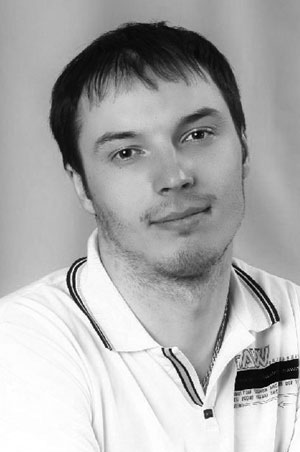Psychophysiological characteristics of football players of various playing positions
Фотографии:
ˑ:
V.F. Turovsky, teacher
J.V. Koryagina, professor, Dr.Biol.
V.A. Blinov, associate professor, Ph.D.
Siberian university of physical culture and sport, Omsk
Key words: sport, football, psychophysiology, personality, attention, anxiety, frustration.
Introduction. The functional status of nervous system and its characteristics represent the main context of motor activity [1, 2]. Athlete’s psychophysiological status is of great importance in playing sports with a high level of neurosis and attention focusing [5, 6, 8].
Player’s physical working capacity depends on the efficiency of information handling and its use to perform a specific motor activity [12, 3].
Thus, the success of football player’s tactical activity is largely determined by the high level of development of his basic features of attention [4, 7, 9]. The most important feature of football player’s attention is its high intensity that reaches the limit in the most critical moments of the game [1, 2]. Brain mental functions, such as memory, thinking, perception play the most important role.
Therefore, the identification of psychophysiological characteristics of football players with different playing positions is of sufficient scientific and practical interest. This is due to three reasons. Firstly, it enables to reveal psychophysiological characteristics of football players depending on their roles. Secondly, it makes it possible to determine the main directions and ways to increase the psychophysiological potential of football players in order to optimize game performance.
The purpose of the study was to examine the psychophysiologyical characteristics of football players with different playing roles in pre-season.
Materials and methods. Exploratory studies were conducted in the professional football club "Irtysh" in Omsk. The study involved 24 football players aged 18-25 years with the playing roles: 2 goalkeepers,
4 defenders, 13 halfbacks, 5 forwards.
Organization of the study included three phases.
At the 1st phase (September 2011 - January 2012) the scientific and methodical literature was analyzed, as well as the research data on sports psychophysiology, its role in various fields of human vital activity. The researchers analyzed the psychological characteristics of playing football required for efficient competitive activity in this sport. The 2nd phase (September 2011 - November 2011) was dedicated to the experiment using psychophysiological research methods, a number of exploratory experiments using psychological tests, in which psychological and psychophysiological indices were defined. There was made a comparative analysis of psychological and psychophysiological indices. The 3rd phase (September 2012 - March 2013) included the analysis of the data, statistical processing of the results using the statistical software packages "STATISTISA 7.0".
Several psychophysiological tests were made during the study.
The stability and attention concentration of athletes was characterized using the Anfimov’s correction test. Eysenck Personality Inventory was applied to determine such mental states as anxiety, frustration, aggression and rigidity. The individual peyshological personality characteristics of athletes were estimated by means of Cattell's Sixteen Personality Factor Questionnaire. The Mehrabian’s questionnaire "Achieving Tendency" was applied to diagnoze personality motives - the desire for success and avoiding of failure.
Results and discussion. The analysis of the Anfimov’s correction test has revealed that the highest quality index of the distribution of attention was observed in halfbacks and comprised 436 points, the lowest rate – in the goalkeepers, 304 points (Tab. 1).
Table 1. Results of the Anfimov’s correction test
|
№ |
Positions |
M±σ |
t > tkp at p<0,05 |
|
1 |
Goalkeepers |
304±12,73 |
|
|
2 |
Defenders |
427±33,21 |
P1-2<0,05 |
|
3 |
Halfbacks |
436±7,46 |
P1-3<0,05 |
|
4 |
Forwards |
420±15,03 |
P1-4<0,05 |
Proceeding from the results of the Eysenck Personality Inventory, forwards and halfbacks have the top scores in the anxiety and rigidity indices, and goalkeepers - in the frustration and rigidity indices (Fig. 1.).
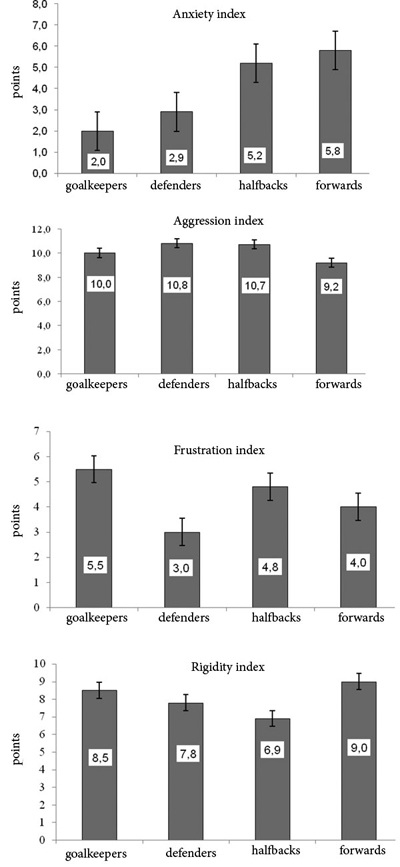
Fig.1. Indices of the test of self-assessment of mental conditions (Eysenck Personality Inventory)
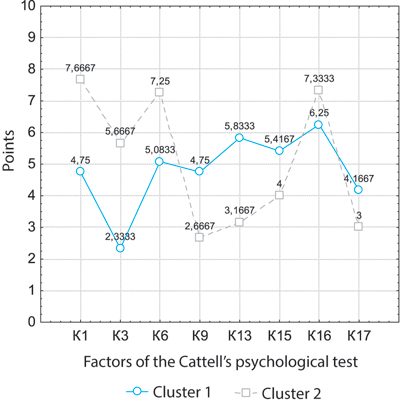
Fig.2. The graph of averages for every factor of the cluster in the Cattell’s test
Likewise, defenders and halfbacks were marked to be most aggressive. All these states are stipulated by the specifics of playing football.
In the analysis of the testing results of athletes in the Cattell’s test the following was established (Fig. 3.).
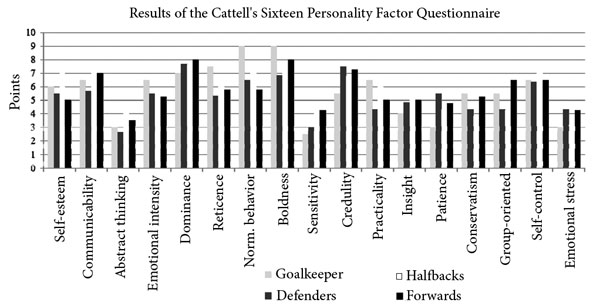
Fig. 3. Indices of the Cattell’s 16 Personality Factor Questionnaire
Football players with all roles, except for halfbacks, have a low range of development of abstract thinking, low range of sensitivity, emotional intensity was less pronounced (percentile <0.25). The factor "low range of sensitivity" characterizes self-confidence, rationalness and flexibility in judgments within the identified roles.
Meanwhile, all the roles are mostly distinguished by dominance, self-control, ultimate courage expressed at its maximum characterizing the ability to independent decision making. These qualities contribute not only to athlete’s self-organization, but also can be a training factor for team leaders.
The "insight" factor is most pronounced among halfbacks, defenders and forwards (percentile > 0.75), due to playing specifics and is a necessary quality of football players, especially professional ones [11].
It has been proved that goalkeepers are more restraint (percentile > 0,75) unlike in other positions. Forwards have low self-appraisal, which is not typical for defenders and halfbacks. Defenders and halfbacks have maximally expressed credulity that testifies to excessive defense and emotional stress and frustration of personality.
The factor analysis of parameters in the Cattell's test has revealed that correlated variables were detected out of 17 analyzed factors and 4 factors were allocated.
Factor 1 (F1) has high factor loads regarding the variables "reticence/communicability” (r = 0,90) and "dependence/dominance” (r = 0,86).
Factor 2 (F2) – in the variables "emotional stability/instability” (r = 0,85) and "low range of normative behavior / high range of normative behavior” (r = 0,77).
Factor 3 (F3) – by the “self-restraint/expressivity” (r=0,72) and the “concrete thinking/ abstract thinking variables (r=0,91).
Factor 4 (F4) – by the “self-appraisal” variable (r= -0,95).
Obviously, for our group of subjects the analysis of this test is better to be made by the selected factors. According to the table of values of factors for each respondent the factors F1, F2, F3 were proved to show the positive attitude of the respondents, and the factor F4 - negative attitude, i.e. indicate the preference for this factor.
Thus, the subjects are sociable, dominant, expressive, have abstract thinking, but are distinguished by low self-esteem.
We carried out a cluster analysis of a similar psychological test. As a result, it has been found that factors such as "reticence/ communicability", “emotional stability/ instability", "dependence/dominance", "low normative behavior / high normative behavior", "shyness/ boldness", "suspiciousness/ credulity", "practicality / dreaminess", "straightforwardness / insight", "conservatism / radicalism" are hardly distinguishable for different game roles and contribute little in the distribution of football players into clusters. We have allocated 2 clusters (Fig.2).
The 1st cluster included: 1 goalkeeper, 4 defenders, 5 halfbacks, 3 forwards. The 2nd cluster: 1 goalkeeper, 1 defender, 8 halfbacks, 2 forwards. Thus, there were defined the factors influencing the clustering of football players, namely: adequate self-esteem/inadequate self-esteem (C1), concrete thinking / abstract thinking (C3), self-restraint/expressivity (C6), realism / susceptibility (C9), patience / anxiety (C13), self-restraint/nonconformity (C15), low and high range of self-control (C16), slackness / emotional stress (C17). Thus, these very factors influence the development of athlete 'psychophysiological status.
In our case such psychological qualities as inadequate self-appraisal, self-restraint, slackness, realism, patience, dependence on the group (conformism), concrete thinking and low self-control are specific for athletes of the 1st cluster. These are mainly defenders and forwards. Unlike the subjects of the 2nd cluster, who have these qualities to be a direct opposite. This group of athletes includes halfbacks, as the manner of playing football required from them development of appropriate psychophysiological qualities.
Self-esteem Communicability Abstract thinking Emotional intensity Dominance Reticence Norm. behavior Boldness Sensitivity Credulity Practicality Insight Patience Conservatism Group-oriented Self-control Emotional stress
Goalkeeper Defenders Halfbacks Forwards
According to the Achieving Tendency Scale by A. Mehrabian, goalkeepers are more success oriented, rather than defenders, halfbacks and forwards (Fig.4.).
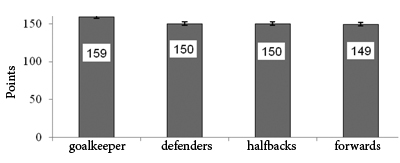
Fig.4. Indicators of The Mehrabian Achieving Tendency Scale.
The Achieving Tendency Scale (A. Mehrabian) presupposes 3 motivational tendencies: high, average and low success motivations.
It has been detected in the analysis that goalkeepers had stronger motivation - 8.6% of the whole team. 13% of defenders had an average motivation and 4.3% were highly motivated. In the group of halfbacks 47,8% of football players had an average success motivation, 4.3% - high. In the group of forwards high success motivation has never been mentioned, only the average motivation - 17.4%. Low success motivation has not been identified among the football players (Table 2).
Table 2. Distribution of athletes in a team by research groups
|
|
Goalkeepers |
Defenders |
Halfbacks |
Forwards |
|
High success motivation |
2 (8,6%) |
1(4,3%) |
1 (4,3%) |
0 |
|
Average success motivation |
0 |
3(13%) |
11 (47,8%) |
4 (17,4%) |
Generally, in the team "Irtysh" 78,2% of football players had an average success motivation, and only 17.3 % - high. However, the significant differences between the groups of defenders, halfbacks and forwards were not found (Mann-Whitney test, p = 1,0).
Proceeding from the study of psychophysiological characteristics of football players of the team "Irtysh" with different roles, the rigidity condition is observed in all roles except for defenders that reduces competitive abilities and efficiency of tactical activity of football players. However, goalkeepers are more success oriented rather than defenders, forwards and halfbacks and more subject to frustration.
However, halfbacks and forwards have more expressed anxiety and aggression due to the expectation of the social consequences of their success or failure. Anxiety was proved to determine athlete's individual stress susceptibility. As a personality trait it characterizes in varying degree the inclination to feel anxiety, fear in most situations. It has been established that halfbacks are more concentrated and focused, unlike other goalkeepers and athletes performing other roles.
Since in football the requirements for operational thinking and, first of all, to reduction of decision-making time come to the forefront, football players need to be able to estimate the current situation, make decision, change the chosen strategy and tactics of their behavior, which in turn affects the attention concentration, which is more pronounced among halfbacks and to a lesser extent in goalkeepers.
Conclusions:
- Goalkeepers of the second division team are less attentive, but bolder and more success-oriented and more subject to frustration and rigidity.
- Forwards of the second division team are less success oriented, but more subject to anxiety and rigidity.
- Halfbacks of the second division team are more attentive, anxious, rigid, aggressive and success oriented.
- Defenders of the second division team are more aggressive and success oriented.
- The cluster analysis resulted in the allocation of 2 groups of athletes distinguished by several psychophysiological qualities. Inadequate self-appraisal, self-restraint, slackness, realism, patience, dependence on the group (conformism), concrete thinking and low self-control are typical for athletes of the 1st cluster. These are mainly defenders and forwards unlike the subjects of the 2nd cluster, who have these qualities to be a direct opposite. Halfbacks belong to this group of athletes.
- The data received are useful in the optimization of the educational and training process by facilitating enhancement of psychophysiological abilities of football players.
References
- Alekseev, A.V. Cope with yourself. Mental training of athletes for the season / A.V. Alekseev. – Moscow: Sovetsky sport, 2007. – 280 P. (In Russian)
- Babushkin, G.D. The enhancement of results of competitive activity in sports games based on development of athletes’ stress resistance / G.D. Babushkin, Y.V. Yakovykh // Acute matters of development of children and youth football: 2nd regional theor.-pract. conf. of football trainers, teachers, instructors, administrators of sports institutions. – Omsk, 2007. – P. 67–79. (In Russian)
- Belenko, I.S. Psychophysiological characteristics of young athletes specialized in game sports of different periods of development and fitness / I.S. Belenko // Vestnik TSPU. – 2009. Iss. 3 (81). – P. 54. (In Russian)
- Vasil’ev, K.I., Koryagina, J.V., Roguleva, L.G. Efficiency of competitive activity and functional status of elite badminton players / K.I. Vasil’ev, J.V. Koryagina, L.G. Roguleva // Omskiy nauchny vestnik. – 2012. – № 3 (109). – P. 174–177. (In Russian)
- Bukova, L.M. Psychological characteristics of personality and perspectives of young football players / L.M. Bukova, V.F. Krovyakov // Pedagogika i psikhologiya. № 9. 2012. P. 25 – 29. (In Russian)
- Voronova, V.I. Psychological parameters of qualified football players influencing success in their competitive activity / V.I. Voronova, S.E. Shutova, U.V. Korneyko // Physical culture, education, health: Proceedings of the internat. theor.-pract. conf. VLSIPC, December, 12-13. 2009 / Velikie Luki institute of physical culture. – Velikie Luki, 2010. – P. 50–58. (In Russian)
- Il’in, E.P. Human psychomotor organization / E.P. Il’in. – St.Petersburg: Piter, 2006. – 383 P. (In Russian)
- Koryagina, J.V. Development of specific sensomotor reactions in training process of badminton players // Omskiy nauchny vestnik. – 2008. – № 1 (63), 2008. P. 142 – 144. (In Russian)
- Kudrya, N.S. Circadian rhythmic organization of physiological and psychological indices of 12-16-year-old schoolchildren / N.S. Kudrya, J.V. Koryagina // Lechebnaya fizkultura i sportivnaya meditisina. – 2012. – № 2. – P. 17–21. (In Russian)
- Tsukanov, B.I. Time in human psyche / B.I. Tsukanov. – Odessa: AstroPrint, 2000. – 218 P. (In Russian)
- Rybchinsky, V.P. Psychophysiological characteristics of representatives of different sports in the period of training for the season: Ph.D. thesis / V.P. Rybchinsky. – Rostov-on-Don, 2000. – 147 P. (In Russian)
- Hastie, P. The development of skill and tactical competencies during a season of badminton / P. Hastie, O. A. Sinelnikov, A. J. Guarinoc // European Journal of Sport Science. – V. 9, 2009. – P. 133–140.
Author’s contacts: koru@yandex.ru

